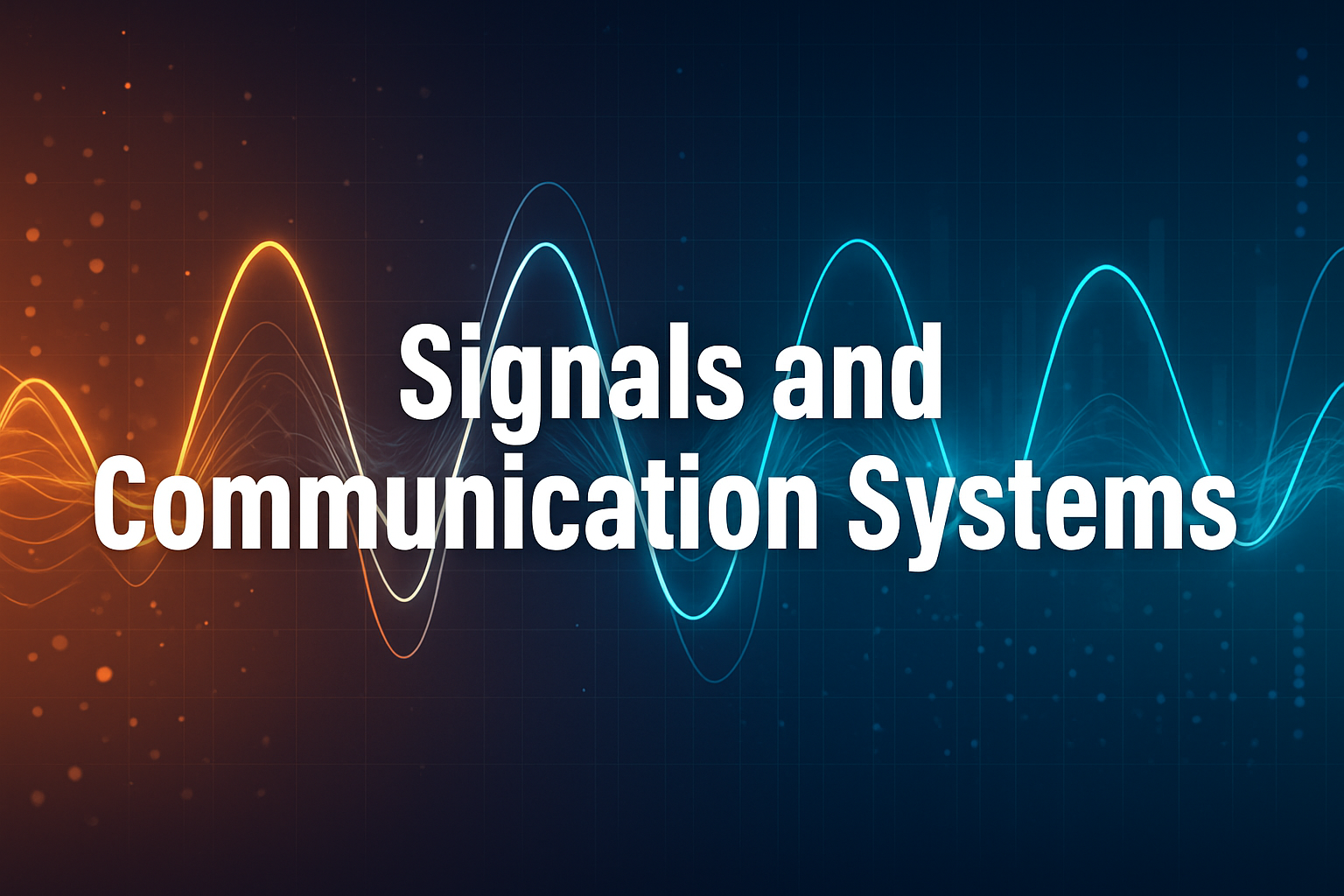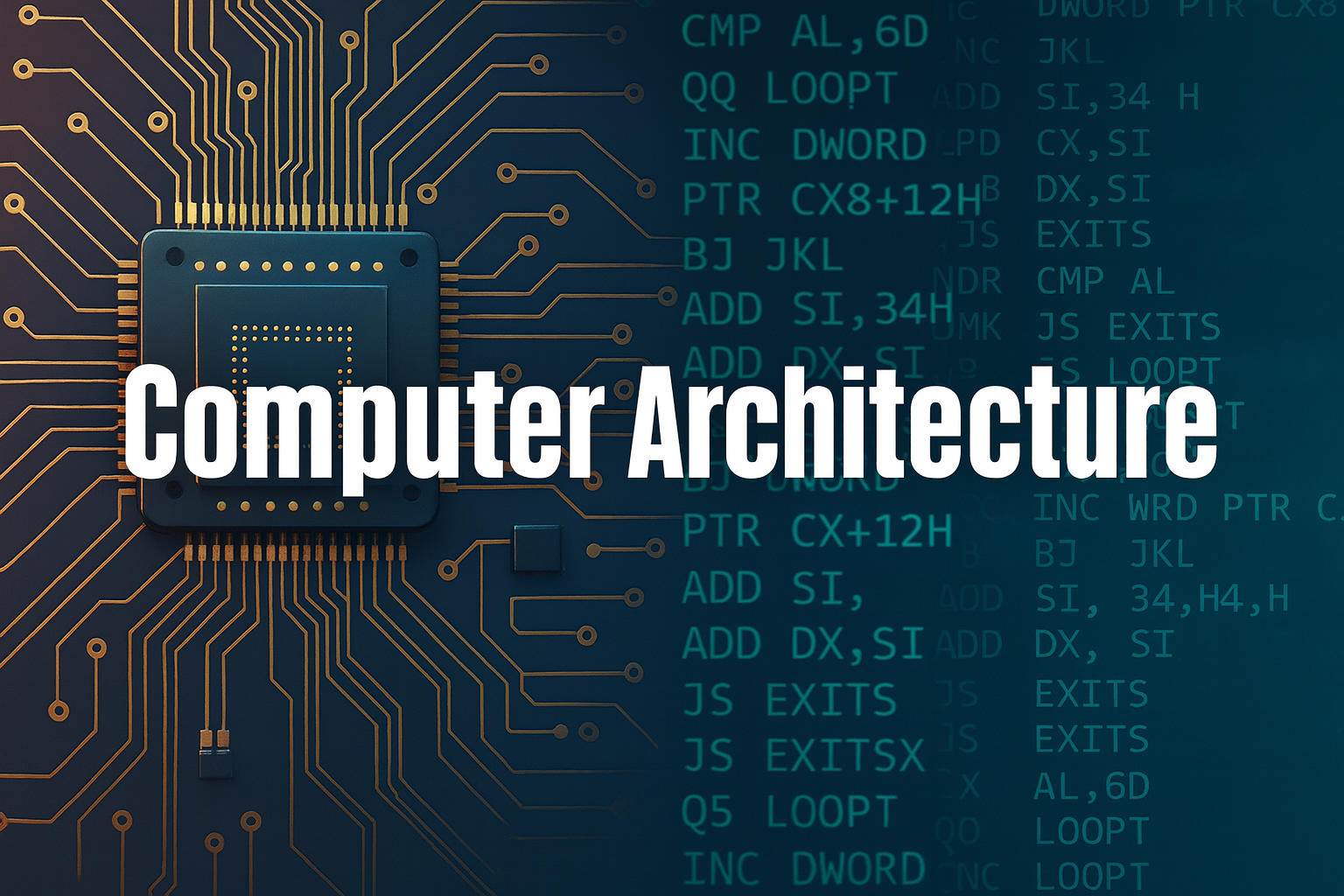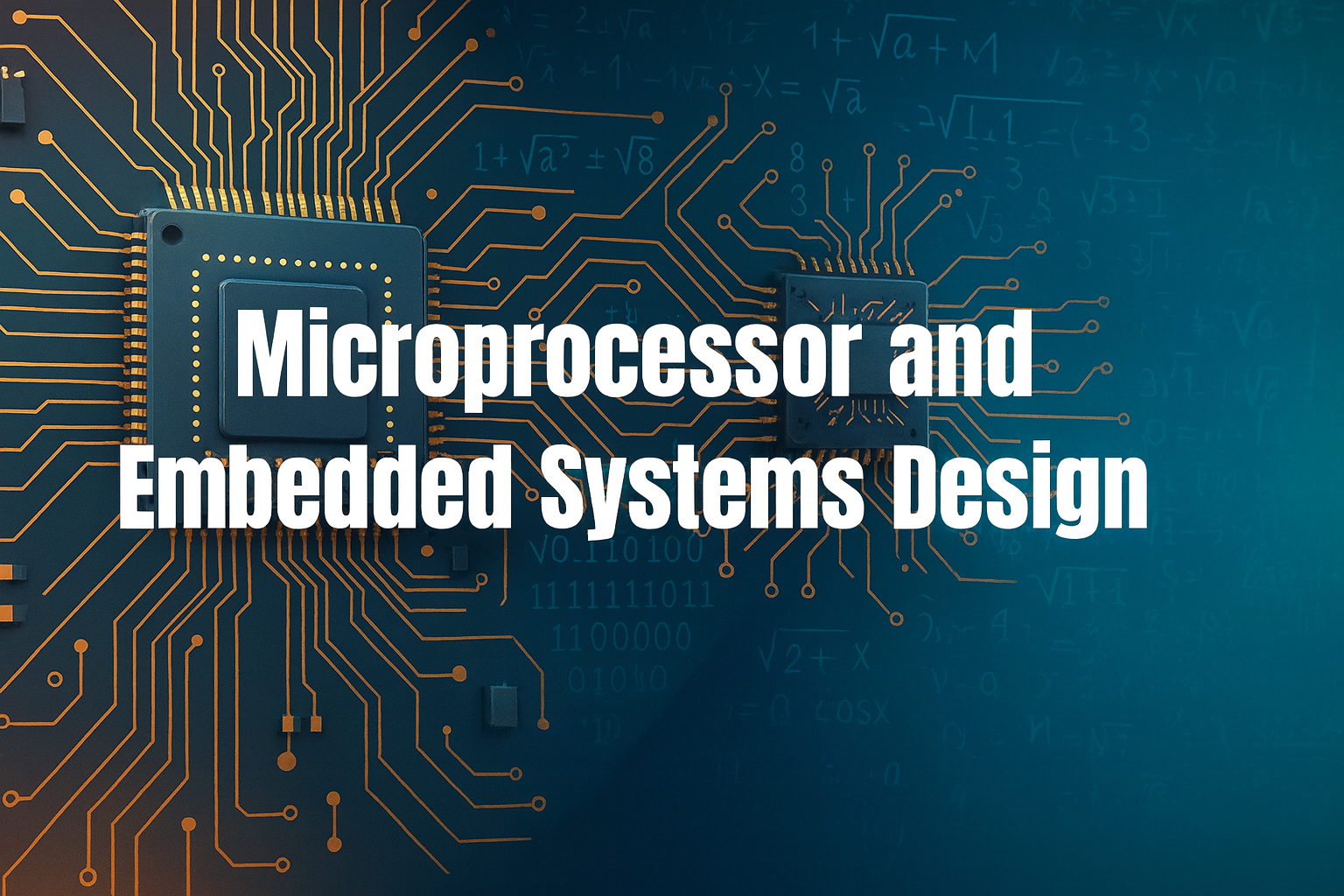Course Description: This course covers the fundamentals of Signals and Communication Systems. It is divided into two major parts: The first part focuses on the representations of continuous-time and discrete-time signals (singularity functions, complex exponentials and geometrical sequences, Fourier Transform, sampling) and the representations of linear, time-invariant systems (difference and differential equations, block diagrams, system functions, poles and zeros, convolution, impulse and step responses, frequency response). The second part focuses on communication systems highlighting mainly analog modulations and demodulations (AM, FM, and PM) used in telecommunications transmission protocols and their implications in terms of design and spectral occupancy.
Teaching
Signals and Communications Systems

Electromagnetics and Transmission Lines
Course Description: This course aims to explain the propagation of electromagnetics (EM) waves in guided and unguided media. The course is divided into two main parts: The first part concerns the unguided propagation of EM waves and covers the topics of Maxwell's equations in spatial and frequency domains and the equations of propagation in lossy and lossless media. The second part focuses on guided propagation and covers transmission lines theory, modeling, and circuits. It also introduces the theory of common RF waveguides and discusses optical propagation using fiber optics.

Computer Architecture
Course Description: This course provides students with a fundamental understanding of today's most used processors such as the ARM proessor. The course topics include an introduction to the organization of computer systems and components, history of ARM processors, ARM architecture and instruction set, ARM memory map, memory access and stack, ARM pipelining and CPU evolution, and ARM assembly language programming. The course is complemented by various practical exercises in which students will learn to write, debug and simulate assembly code using the KEIL simulator. Lab exercises include, arithmetic and logic operation, loops, string handling, and input/output ports.

Antennas and Satellites
Course Description: This course aims to provide a good grounding in a range of antenna and array designs, methods used for their measurement, and the principles of radio wave and satellite propagation. This course teaches the fundamentals of antenna design and propagation and illustrates their application in practical examples. The course covers the theory of radiation, fundamental antenna parameters and concepts, wire antennas such as dipoles and loop antennas, antenna arrays, aperture antennas (e.g., horns), microstrip antennas, numerical analysis, satellite communication and radar systems, and propagation effects.

Microcontrollers
Course Description: This course covers the programming of the Atmel AVR ATmega32 microcontroller. Being one of ARM CPU licensee, Atmel has recently adopted the ARM core in their chips. This course introduces students to the AVR ATmega32 architecture. Students are introduced to the ATmega32 Microcontroller Unit (MCU) features and programming in C language. A major feature of the ATmega32 is its low power consumption, making it an ideal microcontroller for use in designing low-power IoT devices. The course covers programming for interfacing of ATmega32 with an LCD, Serial COM port, DC motor, stepper motor, sensors, and graphical LCD. It also includes detailed programming of Interrupts, ADC, DAC, serial communications, and Timer features of the chip. Students will apply their knowledge to develop applications using the ATmega32 through a course project.

Microprocessor and Embedded Systems Design
Course Description: This course introduces students to hardware design on FPGAs. During the course, students will first learn the functioning of complex digital systems, then model them using a hardware description language, and finally implement them on a development platform based on an FPGA. The hardware is modeled using the VHDL language at both the behavioral and structural description levels. Implementation is carried out using Intel (Altera) Quartus II software on the DE1 and DE2-115 development platforms, which integrate Cyclone II and Cyclone IV FPGAs. The course includes a variety of simple and complex design exercises for sequential systems, synchronous systems, and state machines. It is also accompanied by a series of practical sessions to provide a better understanding of reconfigurable circuits and to develop strong skills in modeling complex systems. Students will apply their knowledge to develop FPGA-based applications through a course project.

Multimedia Signal Processing
Course Description: This course provides a deep insight on multimedia signal processing. Multimedia signals include digital signals such as voice and images. The main focus of this course is on 1D, 2D, and 3D signal acquisition, representation, and characteristics. It covers signal manipulation through digital filter design, enhancement techniques, and transformation in both the spatial and frequency domains. Application related to voice and image filtering are included. Information theory is also introduced prior to covering image and video coding standards such as JPEG, JPEG2000, and MPEG.
